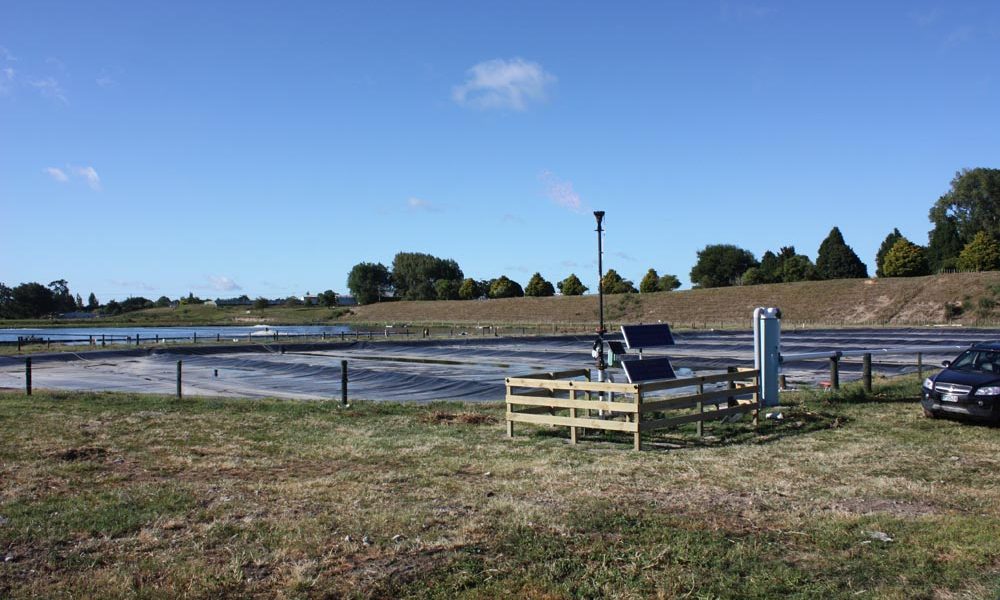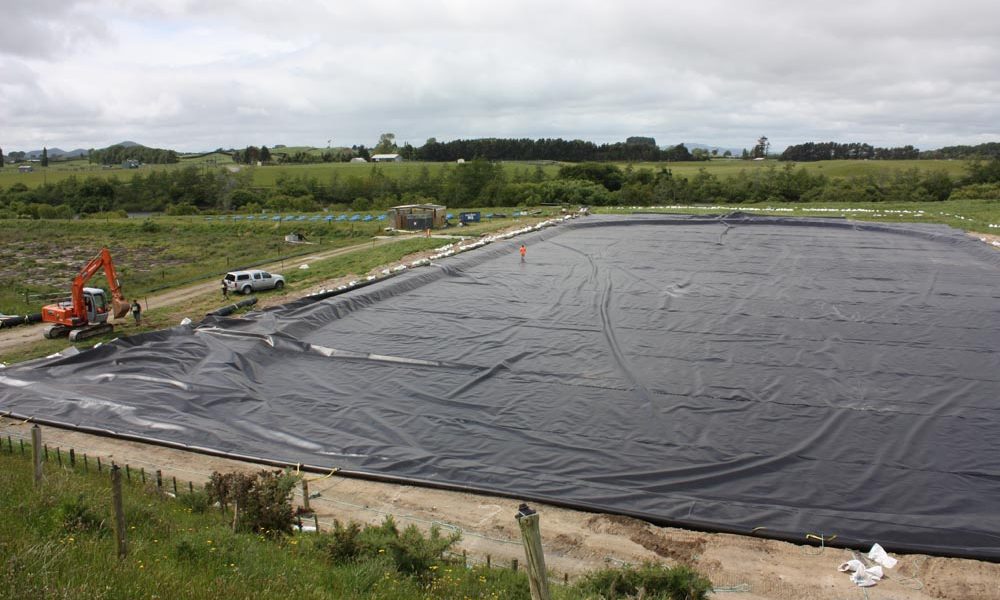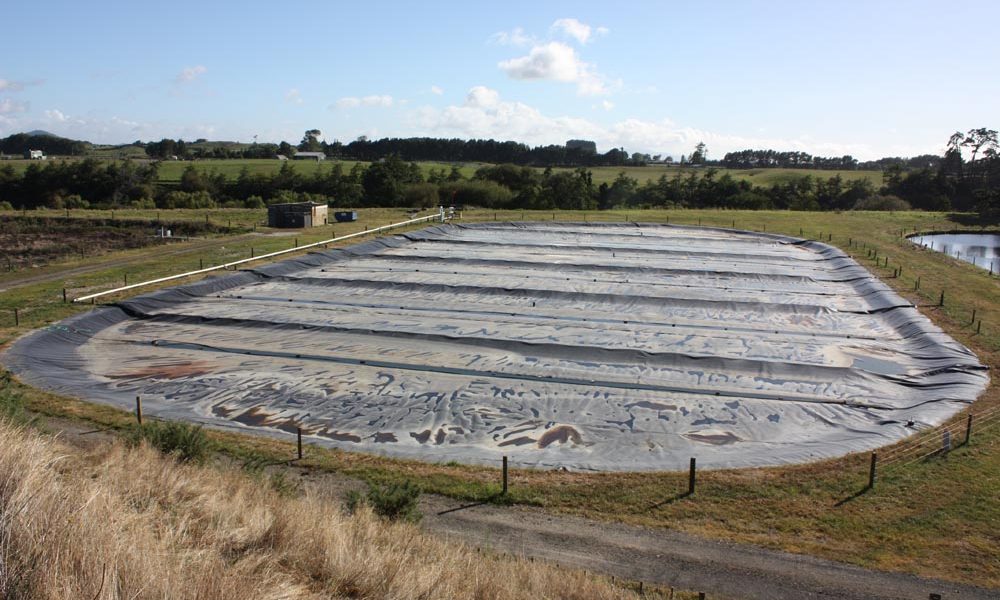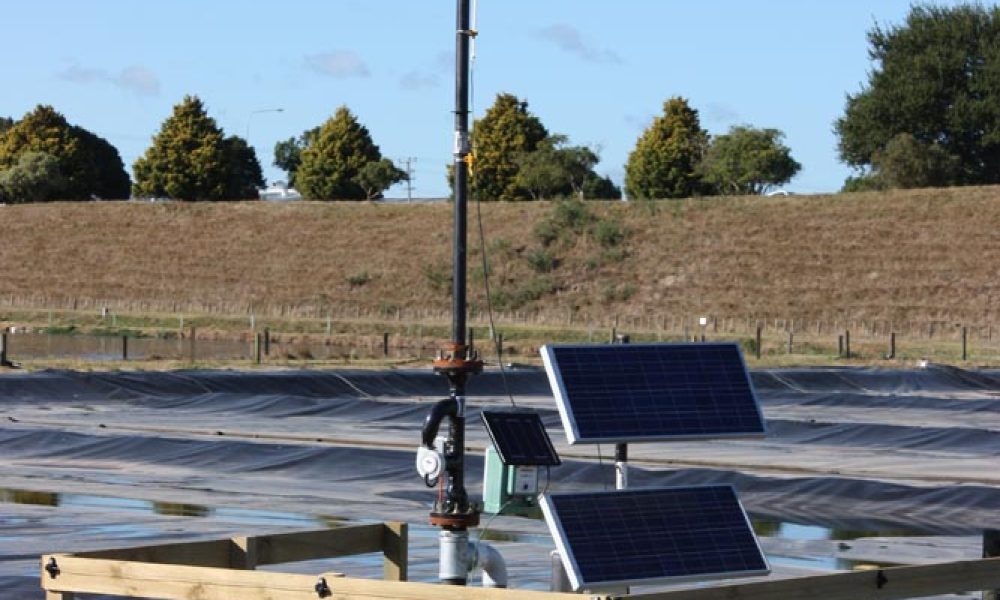Home / AFFCO Horotiu Floating Cover
AFFCO Horotiu Floating Cover
The Challenge
Fabricate and install a 2.00mm HDPE floating cover over an existing operational anaerobic balance pond at AFFCO New Zealand’s Horotiu site during the processing season. The pond was 140m long by 55m wide, resulting in a 9,000m2 fabricated panel to be drawn down the length of the pond.
The project also involved fitting five gas collection strings (drilled HDPE pipe fitted through HDPE drums) beneath the cover spanning the pond at equal intervals.
The Design
The design was done by consulting engineers MWH. A 2.00mm Geoshield HDPE Smooth liner was specified to achieve an improved working life. The thicker membrane is also better suited to pass over the gas collection strings where the membrane is unsupported.
The Construction
Initial removal of the vegetation on the pond was undertaken by a subcontractor to ensure a straightforward deployment. Fabrication was undertaken on an open area and directly in line with the pond. Panels were laid up and welded together to form the 9,000m2 cover. At the same time, the gas collection strings and HDPE ballast pipe work was assembled onsite, along with the excavation of the anchor trench around the perimeter of the concrete waveband. Additional protection of the cover over the waveband was achieved by covering it with a 1.5mm Geoshield HDPE Smooth membrane secured to the concrete.
Deployment of the cover was achieved in under eight hours by using cables. The only delays were to ensure that the cover was feeding onto the pond straight and evenly balanced. Once the cover was positioned in its final place, the excess membrane was trimmed and the cover was secured in the anchor trench at strategic points.
The next exercise was to draw through the gas collection strings. This was achieved by elevating the cover at the leading edge and pulling the strings through with a 14-tonne digger. Once the strings were positioned they were secured to anchor posts to ensure they would not move.
HDPE ballast pipes were positioned between the gas strings and filled with concrete to provide additional ballast. This serves two functions. Firstly, it directs gas to the gas strings that create a pocket beneath the cover, thus directing gas out from under the cover. Secondly, it provides drainage channels on top of the cover to facilitate the removal of rainwater that collects on the cover.
The final phase of the installation was to lay out the rain water collection network on top of the cover and to install the gas collection manifold and condensate trap, which sits in front of an automated flare (client supplied) used to burn off the gas as it is produced.
The Performance
The fabrication and installation of the cover went seamlessly and was completed ahead of time. The final fitting of all additional components took longer than anticipated and delayed completion. Importantly, however, this did not interfere with the operation of the meat works, as ensuring that the plant would not be affected by the work at the ponds was one of the considerations at the outset.





